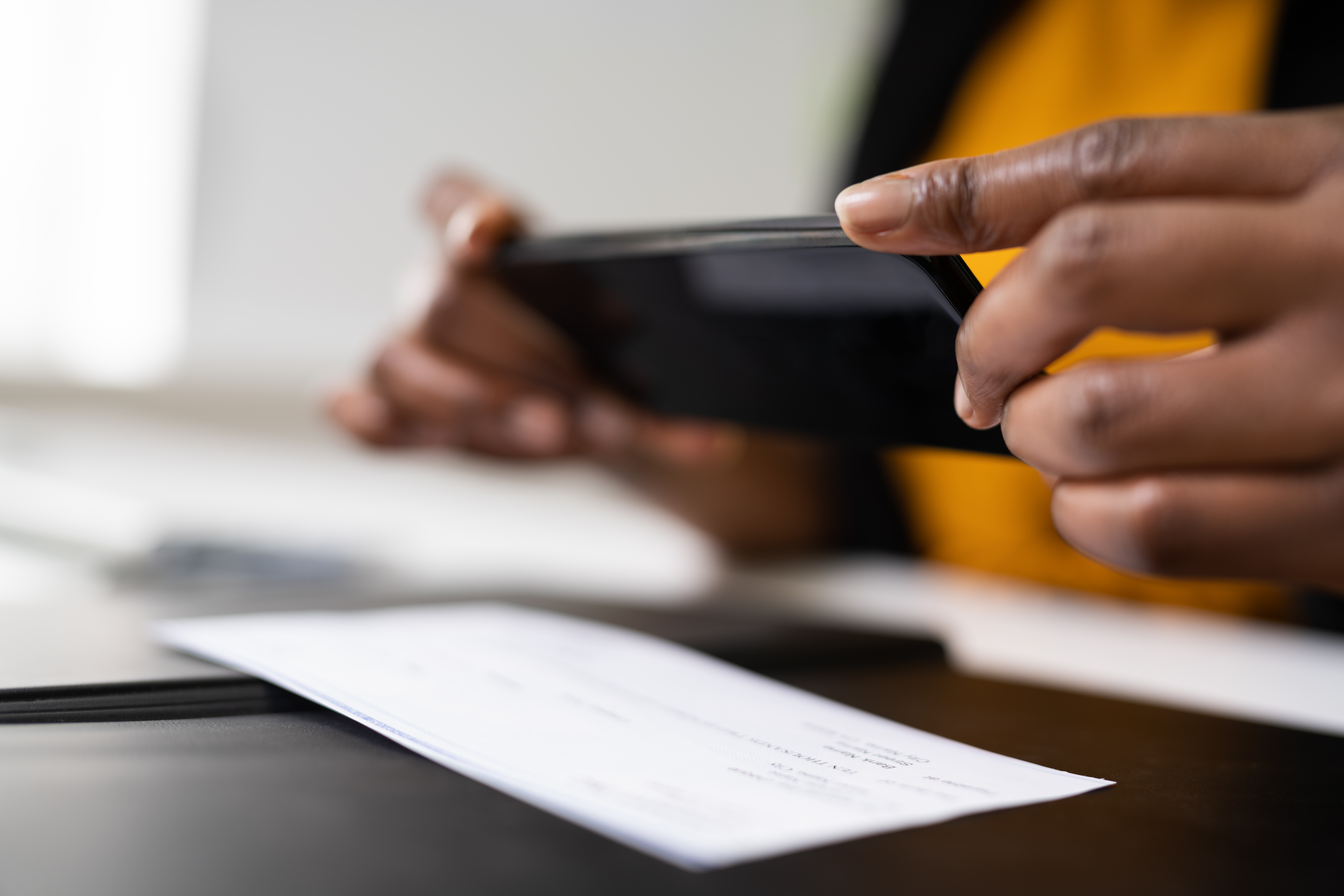How Do Banks Verify Mobile Deposits?
In today's tech-savvy world, mobile check deposit has become a go-to for modern banking, offering a super easy way to deposit checks with just a few taps on a mobile app. It's like having a bank in your pocket, saving you a trip to the branch and speeding up the whole deposit.
But hey, with great convenience comes great responsibility, right? Banks must ensure that the checks deposited through the app are legitimate. For this reason, there's a comprehensive verification process banks set up when you deposit a check from anywhere. Through these security and authorization measures, we'll shed light on the careful methods banks employ to verify your mobile deposits.
The Verification Process

1. Initial Check Inspection and Imaging
The verification process is initiated with a requisite endorsement on the back of the check and the accurate input of the check amount in the app. These initial steps are fundamental as they pave the way for the ensuing verification. You’ll be requested to provide a photo of the front of the check and then, after it's endorsed, a photo of the back of the check.
It's essential that the digital images captured are crisp and legible, as any discrepancies can impede the verification process, consequently delaying the deposit. While some mobile apps will use detection software to input the deposit amount for you, it’s always important to double-check this information before submitting your check.
2. Digital Imaging and Transmission
After capturing the images of the check, the app securely forwards these images to the bank. This digital transmission is safeguarded with encryption to maintain the transaction's safety and confidentiality.
These digital captures act as the cornerstone for the verification process, providing the bank with a basis to meticulously examine the details of the check.
3. Bank Verification Steps:
-
Initial Check Inspection
- Examining the endorsement: Verifying the signature on the back of the check as a primary security measure.
- Check amount entry: Ensuring the entered amount matches the check amount.
-
Image review
- Capturing front and back images of the check: Clear images are crucial for bank verification.
- Transmission to the bank via secure internet connection: Ensuring safe and encrypted transmission.
-
Account Status
- Validation against the issuer’s account status: Confirming the issuer's account is in good standing.
-
Availability of funds
- Verifying sufficient funds are present in the issuer's account.
- Review of high dollar amounts for additional verification: Implementing extra verification steps for larger amounts to ensure authenticity.
4. Fraud Prevention Measures
The threat of fraud looms large in the domain of mobile deposits. Banks employ sophisticated fraud detection systems that meticulously scrutinize various data points to identify red flags.
A manual review by trained bank employees may sometimes be conducted to spot signs of check fraud. This human intervention adds an additional layer of security, ensuring a thorough review.
Customers are often kept in the loop through alerts or notifications if suspicious activity is detected, fostering a transparent banking environment.
The Impact of Verification on Funds Availability
The verification process is a delicate balance between ensuring security and providing prompt access to funds. It can impact the timeline from deposit to funds availability.
To enhance customer satisfaction, banks often expedite the availability of funds for lower amounts, even before the verification process is completed. This gesture not only fosters trust but also encourages the use of mobile deposit services.
Some banking services offer options to review funds instantly with an extra charge. Terms and conditions apply to these deposits, and deposit maximums often apply.
Enhancing Verification Efficiency
The advent of technologies like machine learning and artificial intelligence are proving to be game-changers in speeding up the verification process.
Banks continually pursue refining and streamlining the verification process, exploring innovative solutions to deliver a superior and secure mobile deposit experience to their customers.
Help! Why Was My Mobile Deposit Declined?
It can be frustrating when a mobile deposit is declined, especially when unsure of the cause. Common reasons may include a missing endorsement, unclear images of the check, incorrect check amount entry, or even a discrepancy in account details. Additionally, banks have daily and monthly deposit limits; exceeding these might result in a declined deposit. It's always good practice to review the deposit instructions provided by your bank to ensure the check details are accurate and the images are clear to avoid any hiccups during the mobile deposit process.
If you’re still having trouble verifying your mobile deposit, consider reaching out to your bank’s customer service team for more information.
Experience the ease of banking on the go with Peoples Security Bank & Trust’s Mobile Banking App. Our remote check deposit feature allows you to deposit checks straight into your account, no matter where you are. Just capture the front and back images of your checks, and with a few taps, your deposit is on its way to Peoples Security Bank & Trust for processing. It's a straightforward and secure way to manage your finances without needing a bank trip. Download PSBT's app on the App Store or Google Play today for mobile banking at your fingertips with a trusted local bank in Pennsylvania, New York, and New Jersey.


Conclusion
The verification process in mobile check deposits is important to ensure the security and legitimacy of transactions. It’s your protection against fraud, safeguarding the bank and the customer from potential financial mishaps.
By delving into how banks verify mobile deposits, customers can better appreciate the extensive efforts taken to provide a secure, transparent, and convenient banking experience in the digital realm.